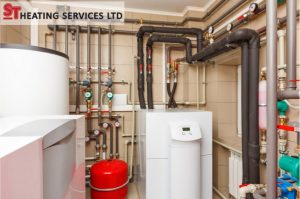A heat pump is a device that plays a crucial role in regulating the temperature in industries and commercial buildings. The commercial models are larger, more powerful and consume more power than domestic types.
Comprehending the Operation of a Heat Pump for Commercial
The need to reduce energy consumption and carbon footprint in various commercial settings has businesses looking for alternative energy sources. For this, reason, heat pumps are increasingly growing in popularity as practical solutions. Besides being eco-friendly, the efficiency of the appliance provides some cost savings.
 In 2019, the Energy Savings Trust established that businesses operating without gas supply can save up to £3,000 a year with a ground source heat pump. Before you contact commercial heating services to install a heat pump, understand what it does.
In 2019, the Energy Savings Trust established that businesses operating without gas supply can save up to £3,000 a year with a ground source heat pump. Before you contact commercial heating services to install a heat pump, understand what it does.
Naturally, heat flows from a hotter region to a colder area. The difference in temperature between the two areas creates a temperature gradient, which leads to heat transfer. However, to move heat in reverse, the temperature gradient requires an external power source’s help. That is precisely the work of the heat pump.
How Does it Work?
A heat pump is not a novel idea. Heating and cooling appliances have been using it in some capacity. A heat pump is a form of HVAC equipment that transports air from one section to another using mechanical energy. The unit can heat or cool a space, depending on need. When it’s hot, a heat pump extracts warm air from inside and moves it outside. During the cold season it warms up a room by moving heat from outside to inside.
The heat pump contains a refrigerant that facilitates the evaporation and condensation cycle. It also has two exchanger coils. When the compressor pumps the coolant, it evaporates at low pressure on one of the coils, allowing it to collect heat. As the refrigerant travels to the other coil, compressions cause it to condense, triggering the release of the absorbed heat. Heat pumps are fully reversible, so they are functional all year. The above process refers to the functioning of an air source pump, which is the most popular. Another option is a geothermal heat pump that draws heat from water or the ground.
The unique feature of a heat pump is that it works in both directions of heat transfer. It can push out heat from a room to provide cooling, and during winter, it doubles up as a heat source.
The Heat Pump as a Cooler
There are four main components of a heat pump. These parts are:
- Condenser: Converts the gaseous refrigerant into liquid form.
- Expansion valve: Regulates the amount of refrigerant flowing into the evaporator.
- Evaporator: Allows the refrigerant to vaporise.
- Compressor: Pumps the refrigerant around the system.
In the cooling mode, the heat pump circulates cold air into a room. The refrigerant in the evaporator absorbs heat from the hot air and expands into a vapour. The compressor then pumps it out to the condenser, where it changes state into a liquid, as it releases heat into the room. The cold liquid flows back into the room for another cycle of cooling, and the process repeats until the temperature reaches a preselected value.
The Heat Pump as a Heater
 For commercial heating purposes, the operating principle of the heat pump runs in the reverse. The evaporator, which is located inside the room, takes up the function of a condenser. The coolant exposed to the warmer outdoor temperatures absorbs heat and vaporises.
For commercial heating purposes, the operating principle of the heat pump runs in the reverse. The evaporator, which is located inside the room, takes up the function of a condenser. The coolant exposed to the warmer outdoor temperatures absorbs heat and vaporises.
The compressor sends the vapour into the room where it loses its heat and liquefies due to the lower temperature. The cycle repeats until the room becomes warmer than the outside, or when the temperature reaches a set value.
The Value of Heat Pump for Businesses
Commercial and industrial enterprises can improve their energy efficiency considerably. For every 1 kWh of electricity used to power a heat pump, up to 4 kWh is released.
The Department of Energy has a Renewable Energy Incentive initiative that rewards the use of renewable energy sources per kWh produced. It means that a company can get cash for using heat pumps.
The initial installation costs of heat pumps can be a bit high, but the units more than pay back the investment over time. A business can expect reduced energy bills and low maintenance expenses.
Businesses that want to capitalise on the benefits of heat pumps, should invest in the correct appliances and installation. ST Heating is the premier company for commercial heating services in Manchester and the rest of North UK. Hire professionals for installation, maintenance and repairs.
Choosing the Best Heat Pumps
ST Heating Services Limited offers the best commercial heating services in the UK. Their experienced engineers install heating systems according to the customers’ specific needs. They also provide continuous technical support to keep the heating systems running in top performance. The company serves hospitals, schools, offices, hotels and all major commercial facilities in Manchester and the North West, UK.
